This is the first time that three nations have flown jets from the same aircraft carrier with British, American and Italian F-35B jets taking off from HMS Queen Elizabeth.
F-35B Lightning jets from the Italian carrier Cavour have landed, refuelled, and relaunched from HMS Queen Elizabeth.
HMS Queen Elizabeth is currently in the Mediterranean following months in the Indo-Pacific region as part of her global deployment. As she heads west back to the UK, the ship has continued her busy programme of working with allied nations and partners, say the Royal Navy.
https://twitter.com/geoallison/status/1462813869181710337
The Royal Navy say that this is the third nation that has landed jets on the carrier.
“On completion of the refuelling, HMS QUEEN ELIZABETH launched an Italian Navy F-35, Italian Air Force F-35, USMC F-35 and finally an F-35B from the UK 617 squadron. The jets then operated in the skies above the two carriers developing their interoperability and mutual understanding of procedures. HMS Queen Elizabeth is the deployed flagship for Carrier Strike Group 21(CSG21). CSG21 will see the ship along with the Strike Group work with over 40 countries from around the world. The Strike Group will operate and exercise with other Countries Navies and Air Forces during the 7-month deployment.”
Jointly is the watchword: Fitting, take-off and flight in formation#F35B @ItalianNavy #F35B #32thWing🦅 @ItalianAirForce
CVL #NaveCavour🇮🇹 & CV @HMSQNLZ🇬🇧 #MediterraneanSea@LockheedMartin @thef35
📸 @ItalianNavy pic.twitter.com/YcC1ByY8Ht— Michele Florio (@MikiAV8BHarrier) November 22, 2021
Italy is the only other NATO partner aside from the US and UK to operate that variant. The flights by the Italians mean HMS Queen Elizabeth has now hosted onboard jets from three different countries since leaving home in May, with the Italians the first European NATO partner to land on the UK flight deck.
“The fact that US, Italian and UK F-35Bs are able to fly to and from one another’s decks offers tactical agility and strategic advantage to NATO”, Royal Navy Commodore Steve Moorhouse, Commander of the UK Carrier Strike Group, was quoted as saying.



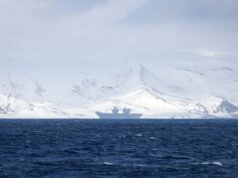
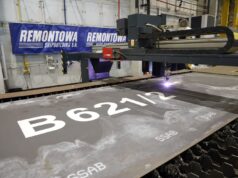
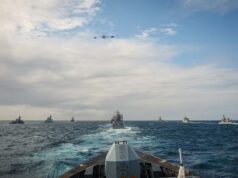


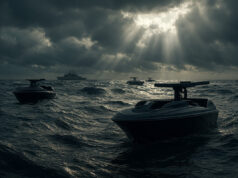
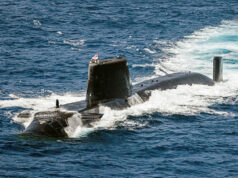

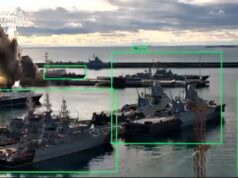
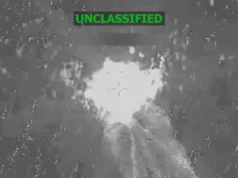

This shows the flexibility of the UK carriers and the F35B to their max. These carriers could become NATO flagships, operating as a carrier strike group made up with aircraft from all allied nations that have the F35B. Unlike a classical carrier where a pilot needs lots of training to land and catch a wire an F35B pilot be that from a land based airforce or a dedicated naval pilot there is not much diffrence in the landing procedure for a QE carrier. I will not say it is the same if the ship was about 20,000 tons that will bob around quite a bit. Now if the Aussies will buy some F35Bs then we could build a combined fleet, they could use our carriers and we could use their Canberra’s.
Hi Ron,
I agree that this is a great demonstration of interoperability and the QE class could well operate as NATO flag ships, however, the article did say that Italy, UK and the US are the only NATO countries operating the F-35B variant so there will be limited opportunity or need to operate in this role. But never say never – it is a powerful statement of NATO capability nevertheless.
As for Australia operating the F-35B from the Canberra’s most unlikely. Two reasons as I understand it. Firstly, the ramp on the Canberra’s isn’t strong enough to support the weight of the F-35B. Secondly, the Aussies do not have any operational plans (at the moment) for naval fixed wing operations. Indeed, they even asked the Spanish to look at removing the ramp from the design. It would however had added significantly to the cost as the ramp is an integral part of the bow structure of the ship so removing the ramp would have required a significant redesign of the forward part of the ship.
So the RAN accepted a ramp that they could not use or remove without significant changes to the design. Sadly.
Cheers CR
Hi CR-hope you are well Squire. That ramp that has no utility has worried me for some time. I understand the rationale that basically precludes using it from its intended role but it still seems ridiculous to incorporate an unusable ski ramp that also reduces the usable deck area!!
Perhaps they should look to strengthen the ramp and then it could be of use…
Good Morning Rob. Apparently the necessary rebuild would be prohibitively costly but can someone explain-presumably it must have been designed originally to allow operations by Harriers/F35B’s so the subsequent build must have been downgraded when the Australian specification was presented at time of order. One wonders if the saving justified the big reduction in potential to operate future aircraft such as the F 35b?
Hi geoff,
I’m well thanks, hope you and yours are well.
I agree with you and I think you are partly right when you say the ramp was designed for Harrier / F-35B. The Spanish Navy operates the Harrier (called the Matador in Spanish service) and I think the designers / requirements simply did not allow for the increased take off weight of the next generation of STOVL aircraft. I.e. the ramp was sized for the Harrier…
We did the same sort of thing with the (then) new frigate sheds at Devonport (I think, or it may have been Portsmouth…). Anyway we built them to take the Leander Class frigates even though the T22’s were already in design / build. That foul up means that our frigates have their bows sticking out of the shed when they go into a refit.
When sitting in a big complex organisation trying to do a job, usually under huge time constraints (because some idiot up the management chain couldn’t make their mind up in time), you will often find yourself blinded to otherwise vital information simply becuase such organisations can be very opaque.
Future proofing should always a key requirement, I’d put it at the top of the list frankly. Even if there are no specific projects that would affect your job you should be able to look at the development trends pretaining to things that would influence or be influenced by your project over its lifetme. Its not rocket science, just basic good engineering and project management prectice but few organisations seem to have the systems in place to do this effectively.
In this case the Spanish got it wrong, but their not the only ones…
Cheers CR
Thanks for post and clarification CR-I would think that given the current climate of rising tensions in the area, the Aussies might want to seriously consider the necessary upgrade to their flat tops and buy a few of the ‘B’ version cost notwithstanding! Now the Japanese also built “Helicopter” carriers in keeping with the self defence clauses in their Constitution but mission creep and a “Rose by any other name” tactic is clearly evident. They must have built in some allowance for operating F35B’s knowing all along that this was the plan!!
Hi geoff,
I agree. However, I think the Aussie defence budget is about to start orbitting a great big financial blank hole called SSN’s.
Who knows what the future holds, but I suspect that the Aussie defence procurement programme is going to face some significant ‘rejigging’ over the next 2 or 3 decades.
Cheers CR
I’d assume that the ramp is Harrier-spec, not F35B. The Spanish use Harriers on their carriers, and lack of compatibility might be a reason why they don’t seem interested in F35B.
I can’t for the life of me understand why the Canberra class was built the way it was ? Australian Politicians and Brass are so small minded on Defense and elitist , Billions get spent and there’s no actual bang for our buck… the ADF is still as small as ever with the smallest amount of Destroyers and Frigate hulls in the water in decades and even then most are nearing 20 yrs of age , Billions will be spent on the Type 26 design to replace 8 with 9 ..the addition of just 1 hull
Hi Jason,
I know exactly how you feel – its the same here in the UK!!! Big government procurements are always political, no need to say anything else really… Sadly.
Cheers CR
I think that if I was an American Admiral I would (should?) be a bit embarrassed about this. The RN seems to be leadinng the way when it comes multinational operations at sea – OK, lots of mixed squadrons of ships operating, but this adds a new and valuable dimension to integration within NATO.
A question of need rather than want 😀
All militaries are a question of need rather than want. As China grows stronger, the US is going to find that they ‘need’ their allies more and more – and that will include this type of operation.
Well said Rob and highlights why the F35 B is the ideal airplane for task. Notwithstanding the penalties it pays in range and payload it still has more than enough for its intended task and with a huge cost saving in build over the cost of cats and traps plus the added flexibility and indeed capability that STOVL brings.
The USN had already hosted Finnish and french aircraft and pilot.
Only the french was really boarded.
So, the USN have 3 nations on their deck, but not at the same time.
More complicated with 2 differents aircraft, and not so much countries have a F18 with navy trained pilots.
I’m just a more surprised this had not happened with the Harrier ?
Yes I agree, I’m sure the Italians, RN and USMC have all operated Harriers together in the early days?
No, not really. USN don’t have the F35B, they all belong to the USMC, which, unlike our RMs, is a totally separate service to the USN.
I’m surprised this hasn’t happened before, back in the days when the RN still had carriers with catapults, given that the US, France and Australia all had them at the same time. Presumably, cross-decking was more difficult if those navies were operating different types of aircraft?
The French have cross-decked Rafales and US F-18s with their respective carriers
Which makes it surprising that in all the time the US, France and RN have been operating together, they never had aircraft from all three nations on the one carrier, don’t you think?
Not really surprising.
If you are not opering the same aircraft its very difficult to host airplane.
It take month to prepare the french Rafale boarding on an US CVN for more than some touch & go.
Hosting aircraft for some exercise is also a bit different than operationnal missions.
French and US are close to be clone for CVN operations, but for the others flatdeck, a lot of nations have their own operationals rules/routine.
Here the RN is taking the example of the USMC, with a lot of “training and experimental” tasks for the first deployment of the QE, so, i’m not surprised to see this happen especially with a single type of aircraft.
Dont forget the political effort needed to do this, maybe in the past it was not so important.
I would like to see Turkey in these drills with F35B